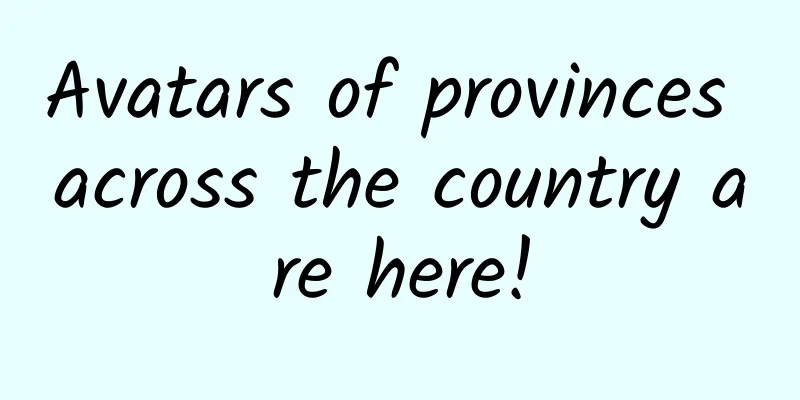5 'Blue Forests' That Are Vital to Life on Earth

|
Translator's note: Forests not only grow on land, but also in the water. Today, the translator will take you to the forest in the water. When you think of forests, you probably conjure up images of trees towering above you and leaves crunching underfoot. But there are some very different forests — in and under water — that are just as beautiful and just as valuable. While they're not all trees, these "blue forests" are essential to life on Earth, experts say. “They protect our coastlines from flooding and erosion. They provide refuge for wildlife and sustain communities with sustainable livelihoods. We are only beginning to understand how important ‘blue forests’ are to keeping Earth’s climate stable, and they are also incredibly fragile. We need to cherish and protect these vital resources,” said Leticia Carvalho, Head of Marine and Freshwater Ecosystems at the United Nations Environment Programme (UNEP). Here are five of the most important "blue forests". 1. Mangroves Mangroves are salt-tolerant trees and shrubs that grow along the coast. They provide a breeding ground for rich biodiversity and a sanctuary for fish and crustaceans. Mangroves are also a form of natural coastal defense against storm surges, tsunamis, rising sea levels and erosion. Research by the United Nations Environment Programme shows that mangrove ecosystems support local economies by supporting fisheries, providing other food sources and protecting coastlines. Each hectare of mangroves is estimated to be worth $33,000-57,000 per year. They extract five times more carbon from the atmosphere than forests on land. However, mangroves are disappearing at a rate three to five times faster than global forest loss. It is estimated that mangrove cover has halved in the past 40 years. In Kenya and Madagascar, UNEP is helping communities recognize the value of mangroves for carbon storage, coastal protection and livelihoods. Countries such as Cuba and Pakistan have also pledged to protect and restore their mangroves. 2. Salt marshes Salt marshes are found in bays and estuaries along tidal coasts in low-lying, temperate regions of the world. They are important nesting and feeding sites for birds, and their shallow, brackish waters provide shelter for fish, molluscs and crustaceans. Research shows that salt marshes, along with mangroves, peatlands and seagrass beds, store more carbon than all the world’s terrestrial forests combined. 3. Seagrass meadows Seagrasses are marine flowering plants found in shallow waters from the tropics to the Arctic Circle. Seagrass meadows protect coasts from erosion, store carbon, and contribute to food security by helping to produce healthy fish stocks. Seagrasses are a powerful, nature-based solution to climate change and although they cover just 0.1% of the seafloor, they store around 18% of the ocean’s carbon. They have recently been discovered to filter microplastics, helping to protect our waters from harmful pollution. But an estimated 7% of seagrass habitat is disappearing each year, the equivalent of losing an area the size of a football field every 30 minutes. 4. Rockweed Dunaliella consists of several species of macroalgae, identifiable by their air-filled sacs that enable them to float upright at low tide. While people have recognized the value of Dunaliella for centuries—it is a staple food and it is a primitive source of iodine—it is now being recognized as a sustainable resource with great economic potential as part of the blue economy. Commercial projects like Dunaliella cultivation can create new economic opportunities, especially for women in rural communities. 5. Kelp forests Kelp forests grow in cold, clear waters and can sometimes grow up to two feet in a day. Pollution and overfishing are threatening these ecosystems, but like Dunaliella, their commercial value is being recognized as part of a sustainable blue economy. Kelp forests are now being sustainably used for medicine, food, industry, animal feed and to fertilize farmland. Kelp and other species of algae do not require fertilizer to grow, just sunlight, carbon dioxide and water. Original link: https://www.unep.org/news-and-stories/story/5-blue-forests-are-vital-life-earth Translated by YJ Reviewed by Daisy |
<<: Do collagen supplements really work?
>>: The real mask of fake "upturned buttocks" - pelvic tilt (Part 2)
Recommend
The efficacy and function of orange peel
There are so many medicinal herbs in the world, a...
Look! There are "white mushrooms" on the ceiling of the subway station...
Have you ever noticed white objects that look lik...
Can viruses be used to treat diseases? Phage therapy - defeating magic with magic!
Author: Zhao Bei In our impression, viruses are o...
"Pre-prepared meals enter campuses" has become a hot search! How harmful is it to the body to eat pre-prepared meals frequently?
You happily go out to eat, but the restaurant pro...
31 kinds of comets recorded in great detail? The Han people's "astronomy" achievements are incredible!
The vast sky and the starry sky have been fascina...
How creative is GPT-4? The divergent thinking that is unique to intelligent creatures has surpassed that of humans!
Divergent thinking is considered to be the core i...
How did the only city in China named after "flower" achieve a hardcore counterattack?
It is the 60th anniversary of Panzhihua's dev...
Battle and coexistence between humans and viruses | Science Gallery
A global virus pandemic has almost overturned peo...
Who is not suitable to eat Dendrobium?
Although the nutritional value of Dendrobium is h...
What enlightenment can the insomniac eyeless fish bring us?
© Kuttelvaserova Stuchelova/Shutterstock Leviatha...
Do you get toothache when drinking ice water? There may be something wrong with your teeth! Don’t blame the ice water anymore!
Toothache is not a disease, but it can be life-th...
What is the medicinal value of Jacaranda?
Traditional Chinese medicine has many uses in lif...
The efficacy and function of small sticky medicine
The development of Western medicine has brought s...
How does the Himalayan wind light up the lights of the Qinghai-Tibet Plateau?
On August 3, my country's highest-altitude wi...
The efficacy and function of thrush
Most Chinese medicinal materials have good effect...









